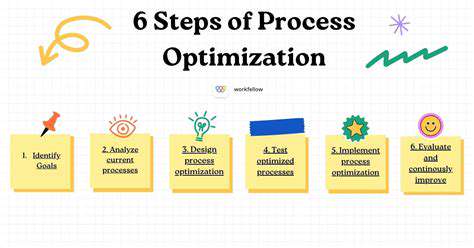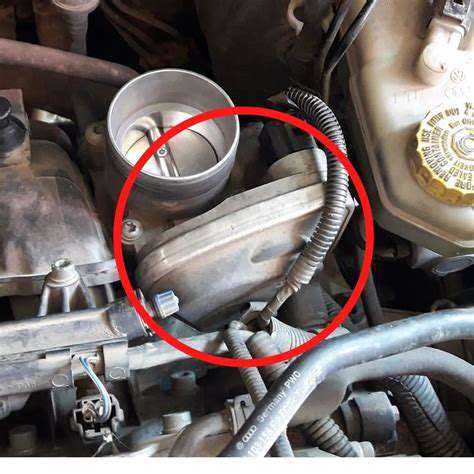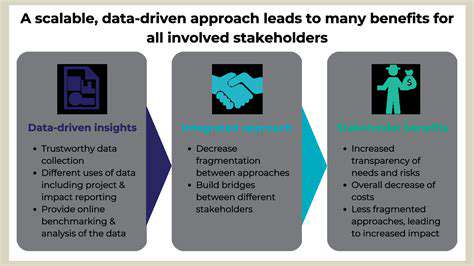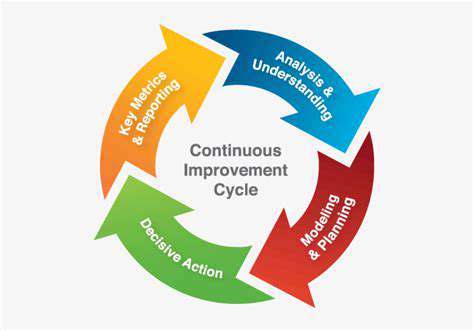
The Rise of Autonomous Vehicles
Self-driving cars are no longer science fiction; they're rolling onto our streets today, ready to transform how we get around. Imagine fewer accidents, smoother traffic, and new freedom for those who can't drive—this is the promise of autonomous vehicles. Early tests show these smart machines can handle complex roads better than humans in many cases, thanks to cutting-edge AI and sensors. But make no mistake, this revolution didn't happen overnight—it's the result of decades of research and incremental improvements in computing power and machine learning.
While the technology keeps advancing, we're seeing real-world applications today. Some cities already have autonomous taxis running limited routes, and major automakers are investing billions to bring these vehicles to consumers. The race is on to perfect the systems that allow cars to interpret their surroundings and make split-second decisions.
Challenges in Development and Deployment
Perfecting self-driving technology is proving tougher than many predicted. Teaching machines to handle every possible road scenario—from sudden downpours to erratic pedestrians—requires solving countless edge cases. Engineers are working tirelessly to create systems that can adapt to snow-covered lane markers, construction zones, and the unpredictable nature of human drivers sharing the road.
The reliability question looms large. Before society embraces autonomous vehicles, the public needs confidence that these systems won't fail at critical moments. That's why companies are logging millions of test miles and developing sophisticated simulation environments to stress-test their technology under every conceivable condition.
Ethical Considerations and Public Acceptance
As self-driving cars become reality, we're facing tough questions without easy answers. Who's responsible when an autonomous vehicle is involved in an accident? How will taxi and truck drivers adapt as their jobs change? These aren't just technical problems—they're societal challenges that require thoughtful discussion and careful policy-making.
Building public trust is equally crucial. Many people remain skeptical about handing control to machines. Transparent testing data, clear safety records, and honest communication about both capabilities and limitations will be essential to winning over reluctant adopters.
Infrastructure Requirements for Autonomous Driving
Our roads weren't designed for robot cars. To fully realize the potential of autonomous vehicles, we'll need smarter infrastructure—roads that can communicate with vehicles, standardized lane markings that work in all weather conditions, and possibly even dedicated autonomous lanes. Some cities are already experimenting with these upgrades, but widespread implementation will require significant investment and coordination between governments and tech companies.
Regulatory Frameworks and Legal Implications
The law hasn't caught up with autonomous technology yet. Traditional traffic laws assume human drivers, creating gray areas for self-driving systems. We urgently need clear regulations covering liability, insurance requirements, and safety standards specifically for autonomous vehicles. Some states and countries are taking the lead, but consistent international standards would help accelerate safe adoption.
The Impact on Transportation Systems and Society
The ripple effects of autonomous vehicles will touch nearly every aspect of transportation. Parking lots might shrink as self-driving cars can drop passengers and park farther away. Traffic patterns could change dramatically with smarter routing. Urban planners are already rethinking city designs to accommodate these changes, but the full social impact won't be clear for years. One thing's certain: the transition will require close collaboration between technologists, policymakers, and the public.
Transforming Transportation and Urban Landscapes
Autonomous Vehicles: Reshaping Urban Mobility
The way we move through cities is about to fundamentally change. Autonomous vehicles could dramatically reduce the time we waste in traffic, while making transportation more accessible to everyone. City planners are already reconsidering street designs, parking requirements, and public transit systems to prepare for this shift. The cities of tomorrow might look very different from today's car-centric urban landscapes.
Impact on Traffic Congestion and Emissions
Picture a world where traffic jams are rare. Autonomous vehicles communicating with each other can coordinate speeds and routes to keep traffic flowing smoothly. This isn't just about convenience—it's an environmental imperative. More efficient traffic means fewer idling cars pumping emissions into the air. Some estimates suggest autonomous fleets could reduce transportation emissions by 60% or more when combined with electrification.
Accessibility and Inclusivity
For millions who can't drive—whether due to age, disability, or other factors—autonomous vehicles represent new independence. No longer reliant on others for transportation, people could gain access to jobs, healthcare, and social opportunities that were previously out of reach. This technology has particular promise for aging populations, allowing seniors to maintain mobility and independence longer.
Economic Implications and Job Displacement
The economic landscape will shift as autonomous vehicles become mainstream. While certain driving jobs may decline, new opportunities will emerge in vehicle monitoring, fleet management, and maintenance. The transition won't be painless—retraining programs and economic support will be crucial to help workers adapt to these changes. Some economists predict the net effect could be positive, but the path there requires careful planning.
Urban Planning and Infrastructure Adaptation
Our cities will need physical changes to accommodate autonomous vehicles. Wider lanes for precise positioning, upgraded traffic signals that communicate with vehicles, and charging infrastructure for electric autonomous fleets are just the start. Some urban theorists imagine a future where parking spaces are repurposed as green spaces or housing, as autonomous cars won't need to park downtown all day.
Societal Impacts on Urban Spaces
With less space devoted to parking and smoother traffic flow, cities could become more pedestrian-friendly. Imagine wider sidewalks, more parks, and vibrant street-level businesses where parking lots once stood. The reduction in traffic noise and pollution could make urban living more pleasant, potentially reversing the trend of suburban sprawl.
Ethical Considerations and Safety Concerns
No technology is perfect, and autonomous vehicles will sometimes face impossible choices. The famous trolley problem takes on new urgency when programmed into vehicle algorithms. Beyond these philosophical questions, practical safety concerns remain—how to prevent hacking, ensure system redundancy, and maintain vehicles properly. Public acceptance will depend on demonstrating that autonomous vehicles are significantly safer than human drivers.

The Future of Personal Mobility and Individual Freedom
Electric Scooters and the Urban Landscape
Electric scooters have exploded onto city streets worldwide, offering a nimble alternative to cars for short trips. Their popularity highlights a growing preference for flexible, on-demand transportation. However, this rapid adoption has created challenges—cluttered sidewalks, safety concerns, and conflicts with pedestrians. Cities are now working to establish rules that balance convenience with public safety, experimenting with designated parking zones and speed limits.
Autonomous Vehicles and the Reimagining of Transportation
Self-driving cars promise to transform not just how we travel, but how we live. Commutes could become productive or relaxing time rather than stressful driving. The very concept of car ownership might change, with shared autonomous fleets reducing the need for private vehicles. This shift could particularly benefit seniors and people with disabilities, granting them mobility they've never had. However, the transition period—when human and autonomous drivers share the road—may prove challenging.
The Impact on Individual Freedom and Choice
More transportation options mean more freedom in how we structure our lives. Someone might choose an autonomous taxi for their commute while using an e-scooter for short errands. This flexibility could reduce transportation costs for many households. However, policymakers must ensure these options remain affordable and accessible to all socioeconomic groups, not just the wealthy.
The Economic and Societal Costs and Benefits
The economic implications are profound. While some jobs disappear, new ones will emerge in tech, maintenance, and fleet operations. The potential savings from reduced accidents and more efficient transportation could benefit the entire economy. On the societal level, increased mobility could strengthen communities as people find it easier to visit family, access services, and participate in civic life.












